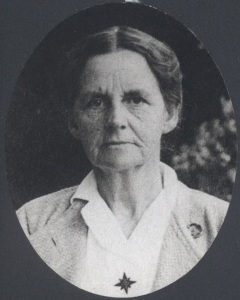This month’s post comes from the 1936 volume of Nursing Notes & Midwives’ Chronicle, at a time when a new parliamentary bill for midwives was finally reaching the last stages before becoming a new Act to supplement those already passed in 1902 and 1926.
It is probably fair to say that those representing the midwives at the Midwives’ Institute were fearful of what the new Act would bring, not least in the form of passing total control of midwifery services into ‘the hands of Government officials’. In fact the 1936 Midwives Act provided for a nation-wide salaried and pensioned municipal midwifery service – which was in fact an issue in the forefront of midwifery discussions, not least because there were concerns that older midwives would not be able to match their younger colleagues in delivery rates, and so were not so assured of a decent income. The creation of a salaried midwife service, which the 1936 Act introduced, did much to protect the working conditions of some midwives, as well as allowing local authorities to set up their own domiciliary midwife services.

The cordial relations between the Midwives’ Institute (to become the Royal College of Midwives in 1947) and the still young British College of Obstetricians and Gynaecologists were not so much in evidence in 1936 as they are today, and Edith Pye, President of the Institute was scathing of a recent report issued by the BCOG investigating the use of analgesics suitable for administration by midwives during labour. The report recommended that midwives should only be permitted to use gas and air apparatus for relief of pain during normal childbirth, and that chloroform should only be administered by obstetricians and doctors. Miss Pye felt that this would severely curtail the efforts of midwives to help mothers, and hoped that the BCOG would continue its investigations, which it did, with regular discussion and meetings of the College’s Sub-Committee on Anaesthetics until 1949, the records of which can now be found in the RCOG Archive.
But while there was some distrust and criticism evident in attitudes between the colleges, this didn’t extend to the personal level, as can be seen by the farewell party held at the Midwives’ Institute for John Shields Fairbairn, who had served as President of the BCOG between 1932 and 1934. Fairbairn had also been Chairman of the Central Midwives Board, and for these services to midwifery he was presented with a chair by the grateful midwives, hoping he would put it to good use during his retirement!

Not all midwives were grateful to the Central Midwives Board, as can be seen by the reports of those struck off the Midwives Roll by the Board during penal sessions. One Frances Tamar Ellis is recorded of being guilty of failing to keep herself and clothing clean, for not filling out ante-natal records, and for not completing the medical aid forms required for the attendance of a doctor. Another, Florence Annie Parkes, had been struck off the Roll when she was convicted of the manslaughter of a baby born in her private maternity home in 1918, and served a sentence of six months’ imprisonment, despite protesting her innocence. Years later she was successful in have her case re-examined with the result that she was granted a free pardon with compensation – signed documents bearing on the case were not admitted as evidence at the trial on the ground of privilege, and she would not have been convicted originally if these documents had been produced. Her reinstatement on the Midwives’ Roll was conditional that she undertake a three months’ course of approved midwifery training, and this was very much in keeping with the emphasis on training and refresher courses which would be so much part of a midwife’s career in later years.
More advertisements are evident in the 1930s volumes of this journal than in earlier years, and there is also a new feature called ‘Where to go on Saturday and Sunday afternoons’. The list of recommendations included the War Museum (which was then situated in South Kensington), the London Museum at Lancaster House, the Victoria and Albert Museum, and the Wallace Collection, all of which are still firm favourites to visit today. However, for a journal which was meant to be circulated among midwives throughout the country, it must have been galling to read about London events and attractions which many would not have been able to visit.

Among the advertisements I found this one, for Cow & Gate milk food, which used the celebrated birth and survival of quadruplets in Cambridgeshire as evidence of the benefits of its food. I was struck by the emphasis on the survival of the preterm boys, and curiously an editorial note supported Cow & Gate as the reason for this success:
‘The fact that the St Neot’s Quadruplets are fed entirely on this perfect food speaks for itself. I believe it is true that there is no record in any country of quadruplets surviving more than a day or two when three of them are boys. The feat of keeping these children alive is really much more remarkable than that of preserving the Quintuplets of Canada, who are all girls. The experts in charge of the feeding all agree that Cow and Gate is a remarkable food. In short, this famous English Baby Food has done something that science has never been able to do before. It has kept alive, and is now bringing up to healthy childhood, four babies born at a birth, three of which are boys.’
My next task is to find out if indeed it was harder to ensure the survival of male babies during the early years of last century!